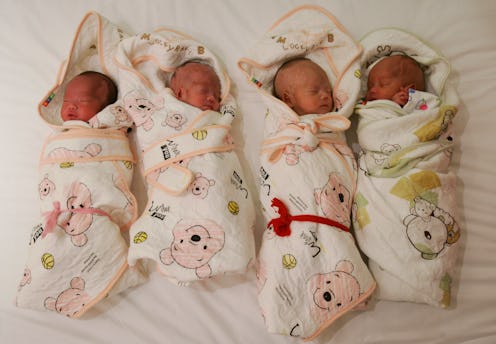Life
Excellent News About IVF
With more women trying to conceive babies later and with the price of reproductive technologies dropping over time, the United States has recently seen a large increase in the number of in-vitro fertilizations (IVFs) attempted per year. Although IVF is not a dangerous procedure, harvesting eggs from the woman involved is obviously much more difficult and invasive than, uh, harvesting sperm from the man (he just has to ejaculate in a cup). Women given drugs to produce eggs for IVF occasionally suffer serious side effects, but a new egg-stimulating drug called kisspeptin means that IVF is now safer than ever before.
In-vitro fertilization, i.e. the "test tube" baby-making process, is when the egg and sperm are joined in a laboratory instead of in a woman's body. Usually a woman's body will release just one egg on a certain day per month, but fertility doctors need to get a mom-to-be's ovaries to release more than one egg on demand for the IVF procedure. Older drugs used for this purpose, including a hormone called hCG, occasionally cause ovarian hyperstimulation syndrome (OHSS) in even very healthy women.
OHSS sounds awful: symptoms include painful swelling of the ovaries, bloating, nausea, diarrhea, rapid weight gain, and breathing problems. Patients may need to be admitted to the hospital, if they develop a ruptured or twisted ovary and other more serious complications. Occasionally OSHH is even fatal.
In a recent study, Prof. Waljit Dhillo of the Department of Medicine at Imperial College London tried a naturally-occurring hormone called "kisspeptin" for stimulating egg production. Twelve women out of 53 gave birth to babies following a successful round of IVF facilitated by the kisspeptin. Kisspeptin is therefore about as effective as other follicle-stimulating drugs, but it's safer because it doesn't stay in women's bloodstreams as long as the older drugs, thereby reducing the risk that a patient's ovaries will become overstimulated.
Since 1 to 2 percent of women undergoing ovary stimulation will develop OHSS, and over 165,000 IVF procedures were conducted in the United States last year, this new drug stands to improve (and even save) the lives of many hopeful mothers. The biological boundaries of reproduction continue to expand, as science safely and effectively gives more prospective parents the children they so desperately want.
